Column: Here are the 32 coal plants still powering the American West
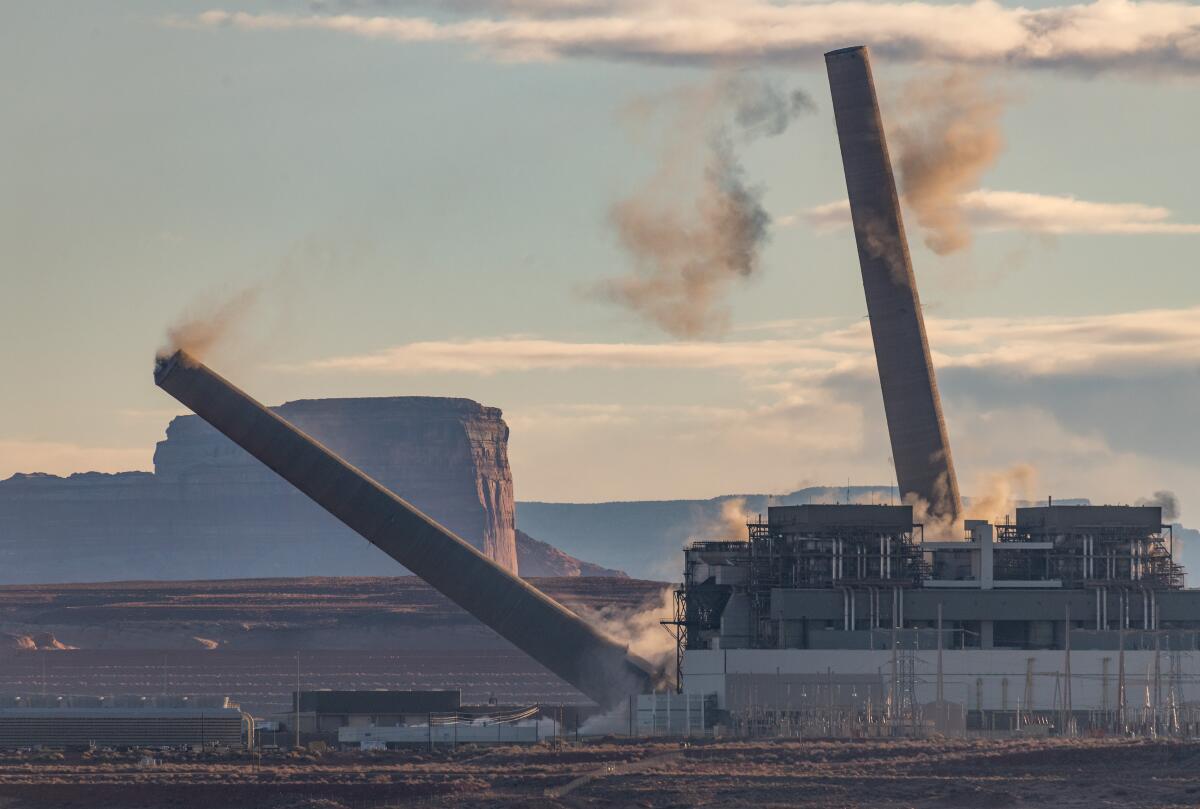
- Share via
Over the last two decades, 21 coal-fired power plants have shut down across the Western U.S.
Twenty-one down, 32 to go.
Those numbers are based on a Sierra Club tracker and an L.A. Times analysis. They show how much more work is needed to help California and the rest of the West phase out the dirtiest fossil fuel.
They also shine a light on the important progress being made as climate activists pressure government officials to hold fossil fuel companies accountable for the harm done by their products — and as solar panels, wind turbines and other clean energy devices increasingly outcompete planet-warming coal, oil and gas on the market.
You're reading Boiling Point
Sammy Roth gets you up to speed on climate change, energy and the environment. Sign up to get it in your inbox twice a week.
You may occasionally receive promotional content from the Los Angeles Times.
Those efforts could be boosted on Thursday when the Biden administration is expected to finalize several rules limiting pollution from coal- and gas-fired power plants. The regulations won’t end the climate crisis. But they’ll certainly limit the pain.
In the race to slash heat-trapping pollution, progress and pain usually go hand in hand.
In 2022, coal supplied just over 15% of electricity on the Western Interconnection, the power grid spanning most of the American West and parts of western Canada and northern Mexico. And even though there’s just one coal plant left in a West Coast state — Washington’s Centralia plant, which is slated to close in 2025 — several coastal population centers still buy power from faraway coal generators. Those metros include Los Angeles, Portland and the Puget Sound region, as I reported this month.
The L.A. Department of Water and Power is working to convert the coal-fired Intermountain Power Plant outside Delta, Utah, to a mix of gas and clean-burning hydrogen, with the goal of eventually burning 100% hydrogen. The utility companies Portland General Electric and Puget Sound Energy are under state orders to end direct coal purchases in the next few years.
But the Western grid is a sprawling, interconnected maze of generators and wires. Electrons follow the path of least resistance, and utilities inevitably rely on one another to ensure the power stays on. If the winds suddenly die down on a hot day in California — reducing wind turbine output right when we need lots of energy to keep our air conditioners humming — you can bet that if there’s a coal plant in Wyoming with spare capacity, it’s going to help power the West Coast, whether we know it or not.
That’s why it’s so important for Californians — and Oregonians and Washingtonians, and everyone who cares about the climate crisis — to think beyond the ambitious goals that their state lawmakers may have set, important as those goals are. Even if your state or power company claims to be moving 100% clean energy, some of your electricity may still come from lumps of coal.
And even if your life is as clean as it gets — solar panels on the roof, battery in the garage, electric vehicle, induction stove, no plastic containers, compost bin — every ton of coal burned in Montana and Utah and Wyoming poses a threat to you too.
So here’s a rundown of the 32 Western coal plants yet to close — and ideas for how you can hasten their demise.
Arizona: Local action matters
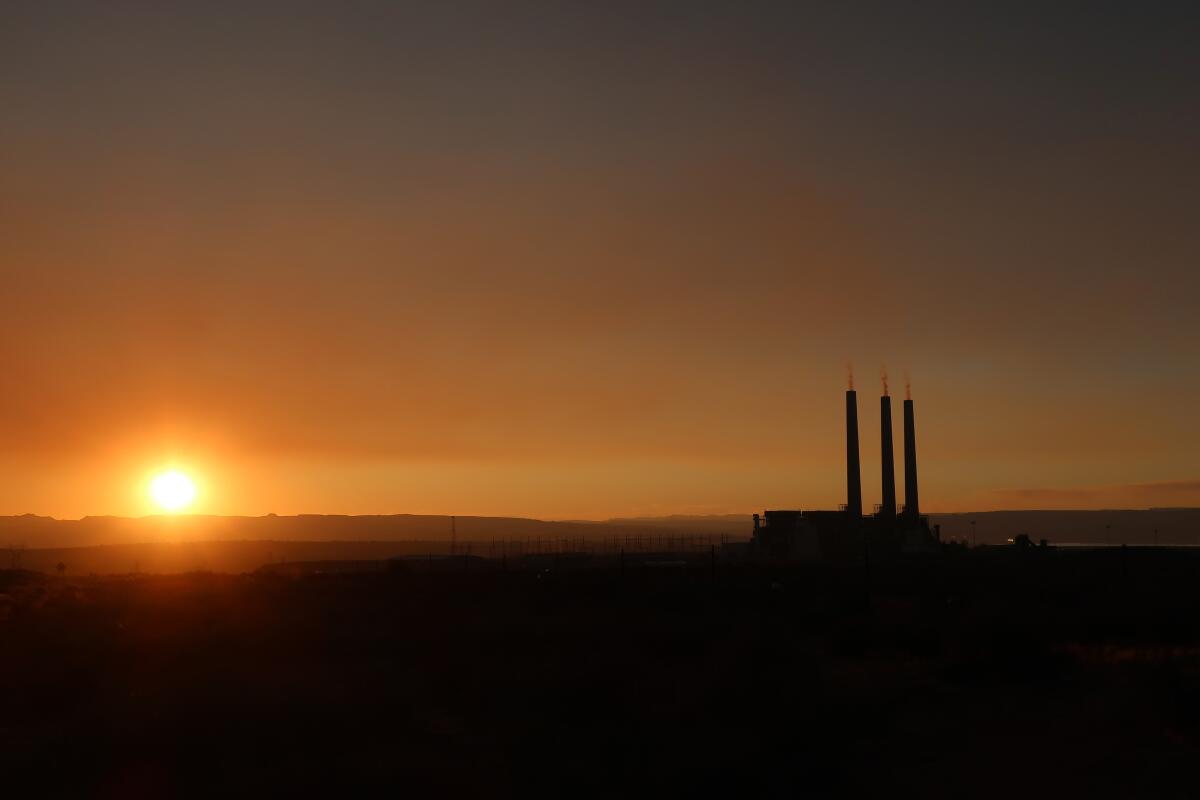
This presidential battleground state is home to four coal plants.
The endgame is clear at Cholla Power Plant, which the state’s largest utility company, Arizona Public Service, plans to shut down in 2025. The same is true for three of four coal units at Springerville Generating Station. Tucson Electric Power says it intends to stop operating one of those units in 2027 and another in 2032. The Colorado-based cooperative Tri-State Generation and Transmission announced in December it would cease operations at its own Springerville coal unit in 2031.
But Salt River Project — a Phoenix-area public utility whose board of directors is elected by landowners — plans to keep running the fourth Springerville unit indefinitely. The utility has said only that it anticipates scrapping that unit “in the years following the closure” of its other coal-fired power plant, Coronado Generating Station, currently slated for shutdown by 2032.
That’s a long time to wait, when scientists and activists say we should be accelerating toward 100% carbon-free electricity by 2035 to give ourselves the best odds of avoiding a future of ever-deadlier heat waves, wildfires, floods, storms and droughts.
Fortunately for Arizonans, they’ve got an avenue for action.
Salt River Project landowners can vote for board candidates who support renewables — and this month they did, electing several candidates who campaigned on clean energy. Although only landowners could vote (archaic and inequitable, in my view), anyone could knock on doors or make phone calls. There are similar opportunities to influence public utilities around the country.
The Grand Canyon State’s fourth coal plant offers a fascinating case study in the politics and economics of fossil fuels.
Apache Generating Station is owned by Arizona Electric Power Cooperative, which supplies electricity to 150,000 rural homes and businesses, mostly in Arizona but also a few in Southern California’s Riverside County. Only one of Apache’s generators burns coal — and even then only some of the time, switching between coal and gas, usually depending on the price of gas.
Patrick Ledger, the cooperative’s chief executive, told me that despite rising costs due to environmental regulations, coal has been an affordable, reliable energy source for the low-income towns he serves — in part due to smart investments, like the technology to switch to gas when the fuel is cheap. He also emphasized that the cooperative is beginning to invest in solar farms with battery storage — with more to come if the co-op can secure grants under President Biden’s climate law, the Inflation Reduction Act.
In a best-case scenario, Ledger said, the organization will stop burning coal in the next four to five years.
“A lot of people think folks like us are just coal happy. That’s just ridiculous,” he said.
“Our objective is to make this a responsible transition, one where we don’t create [utility] rate shock for poor people,” he added.
The Buffett fleet: Welcome to Wall Street

Spend enough time writing about the U.S. energy industry, and you’ll notice a trend: Warren Buffett is everywhere.
PacifiCorp, one of several big utility companies controlled by the billionaire investor’s Berkshire Hathaway empire, is the operator and majority owner of six of the 32 coal plants still running in the West, two in Utah and four in Wyoming. (PacifiCorp also holds minority shares in two Colorado coal plants). Buffett’s coal fleet supplies electricity to customers of PacifiCorp subsidiaries Pacific Power and Rocky Mountain Power in parts of Northern California, Idaho, Oregon, Utah, Washington and Wyoming.
The Sierra Club and other environmental groups have been doing battle with the so-called Oracle of Omaha for years. They have pushed blue state regulators in particular to limit the amount of ratepayer money that PacifiCorp can invest in its coal burners, in hopes of prompting Buffett’s company to replace the polluting machines with cheaper, cleaner alternatives.
Their efforts have helped force PacifiCorp to outline closure timelines for its coal fleet.
But so far, those timelines are still far out of whack with what climate scientists say is necessary.
Just this month, PacifiCorp backtracked on a plan to shutter its Utah coal plants, Huntington and Hunter, by 2032, reverting to the previous retirement dates of 2036 and 2042. The company also intends to keep burning coal at its Dave Johnston, Jim Bridger and Wyodak plants in Wyoming through the late 2030s, although it says it will outfit Jim Bridger with climate-friendly “carbon capture” technology that has yet to be commercially proved. PacifiCorp plans to ditch coal at Wyoming’s Naughton plant by 2026.
“They could retire these coal plants and replace them with clean energy and save customers billions of dollars,” Sierra Club staff attorney Rose Monahan said. “Instead of moving forward with clean resources, they’re doubling down on fossil fuels.”
PacifiCorp’s reticence to embrace clean energy is ironic given that just two months ago, Buffett was bemoaning that it’s getting harder for Berkshire Hathaway and other utility companies to make money because wildfires are getting worse, exposing utilities to increasingly exorbitant damage claims when their power lines spark those fires. And why are fires getting worse? In great part because of climate change. In great part because of the coal, oil and gas that companies such as PacifiCorp are burning.
It makes your head spin.
Also ironic: Monahan suspects PacifiCorp is tapping the brakes on previously planned investments in solar, wind and batteries — leaving Inflation Reduction Act money on the table — precisely because of wildfire liability costs that Berkshire may be facing.
“It’s sort of an outrageous strategy when you think about it,” she said.
You could choose not to think about it too hard, lest your head hurt. Or you could take action.
For Westerners who don’t want to endure a hotter, drier future — or don’t want to see their favorite national parks shrouded in smog — that might mean submitting written comments to state and federal agencies considering stricter coal regulations.
It definitely means keeping climate and air quality in mind at the ballot box, from presidential elections to local races. In Utah, Salt Lake City and other municipalities are trying to make up for PacifiCorp’s shortcomings by purchasing clean energy directly.
And if you’ve got the money to own stock in large corporations? Then you can use your voice as a shareholder to urge executives to take climate seriously. The nonprofit As You Sow, for instance, works with shareholders to advocate for climate action.
Wyoming: Coal’s best friend
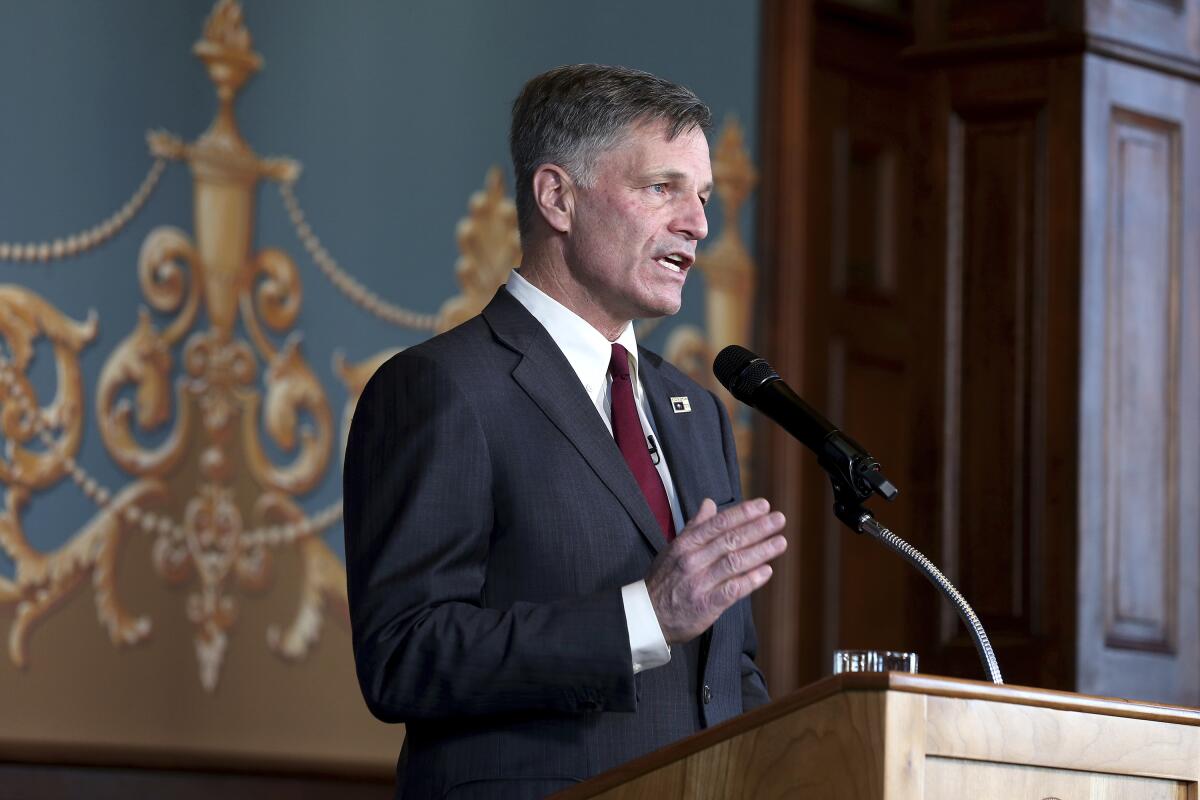
Beyond Buffett’s fleet, there are nine more coal plants in Utah and Wyoming. Together they’re home to nearly half of the 32.
Four of Utah and Wyoming’s coal plants — known as Neil Simpson II and Wygen I, II and III — are majority-owned by Black Hills Corp. and are clustered at the Gillette Energy Complex in northeastern Wyoming, along with PacifiCorp’s Wyodak plant.
Black Hills serves electricity customers in Colorado, Montana, South Dakota and Wyoming. Outside of Colorado, the company has faced little regulatory pressure to move away from coal. As such, it’s announced no firm timeline to close the Wygen plants.
In a recent regulatory filing, in fact, Black Hills quietly revealed it’s abandoning a plan to convert Neil Simpson II from coal to gas, a still dangerous — but relatively less polluting — fossil fuel. Instead, the company will update the plant to run on both fuels.
From an economic perspective, continuing to run the Wygen facilities makes sense, according to Shannon Anderson, an attorney with the Powder River Basin Resource Council, a Wyoming environmental group. They’re some of the nation’s newest, lowest-cost coal plants. Even with new-build solar and wind farms cheaper all the time, Wygen can help keep utility bills low.
But as the Biden administration and hopefully future presidents continue to crack down on climate and air pollution, the costs of operating coal and gas plants will keep rising. On Thursday, the U.S. Environmental Protection Agency is expected to finalize rules limiting planet-warming carbon dioxide emissions and mercury pollutants that can affect the nervous system and kidneys.
Black Hills has touted a plan to make renewable energy and storage nearly half of its power capacity by 2030. Anderson isn’t so impressed. She said the company needs a game plan for shutting down Neil Simpson II and, eventually, the Wygen plants.
“The utility needs to take its transition plan seriously and broaden out the ability to have solar and other renewable resources to address the risk that coal could have going forward — the regulatory risk and the climate risk,” Anderson said.
Wyoming is home to two other coal plants without closure dates: Dry Fork and Laramie River, each of whose largest owner is Basin Electric Power Cooperative. The nonprofit noted in a sustainability report that coal supplied less than 39% of its electricity in 2022, down from nearly 85% at the turn of the century. But Basin Electric also describes coal as “extremely reliable and efficient.”
Basin Electric is owned by 141 member co-ops that collectively serve 3 million homes and businesses across nine states. Most of those co-ops hold local elections, choosing boards of directors who ultimately decide where everyone gets their power.
Utah: L.A.’s home away from home
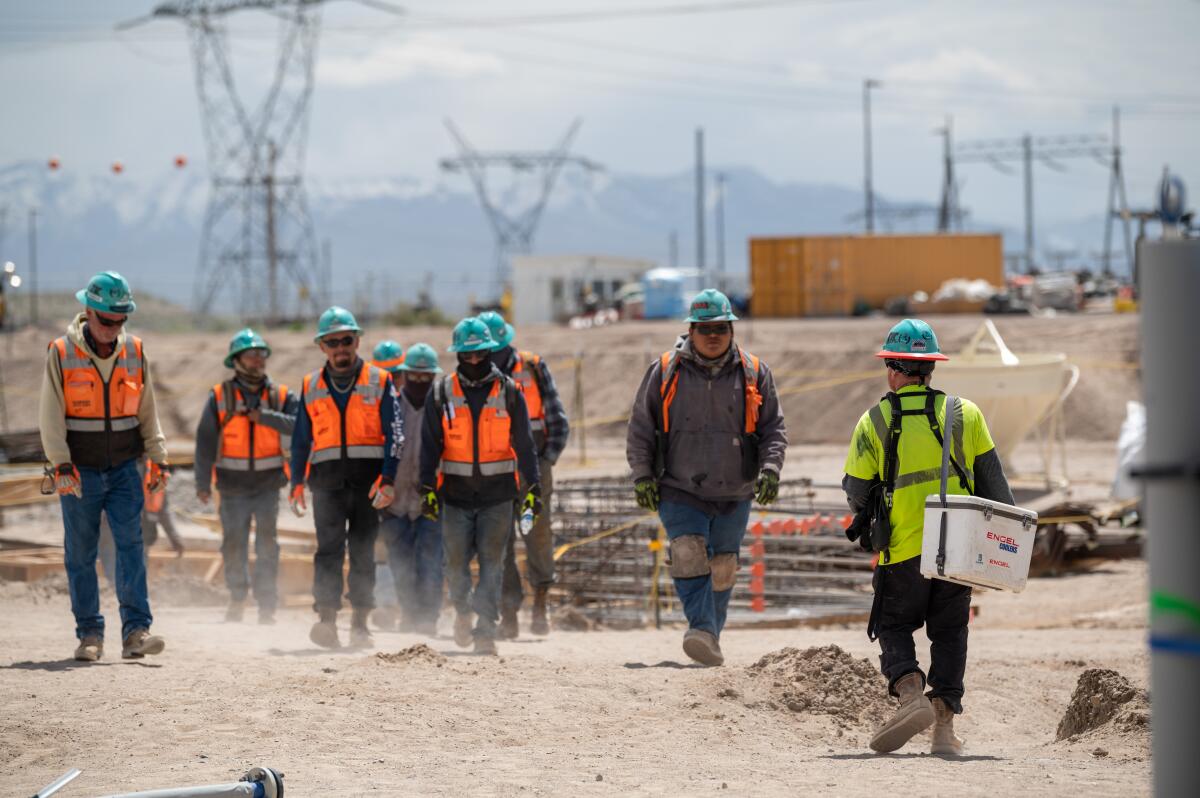
First, the frustrating news: This month, Deseret Power Electric Cooperative, which serves 45,000 rural customers in Utah and neighboring states, filed a document seeking permission from Utah officials to install equipment to limit hazardous nitrogen oxide emissions at its coal-fired Bonanza Power Plant — with the expectation that customers will pay for the equipment later.
Less pollution may sound like a good thing.
But the fact that Deseret Power may invest tens of millions of dollars in “selective catalytic reduction” equipment to cut down on nitrogen oxide means the co-op wants to keep the coal plant running for many years — “through at least 2041 or 2042,” Deseret wrote this month. Without pollution controls, the co-op had previously expected to shutter the plant by 2030.
Elsewhere in the Beehive State, the L.A. Department of Water and Power is racing to pull off a remarkable transformation.
For decades, the coal-fired Intermountain Power Plant has been one of Southern California’s largest electricity sources, supplying not only Los Angeles but also Anaheim, Burbank, Glendale, Pasadena and Riverside. Now DWP is hurrying to finish building a plant next door that will run primarily on gas, but with the capability to mix in up to 30% hydrogen at startup in mid-2025.
“We’re at peak construction. There are about 1,000 workers on-site,” Intermountain Power Agency spokesperson John Ward said.
L.A. and other Southern California cities will use hydrogen to store renewable energy. When they’ve got more solar energy than they need, for instance — a problem especially during months like April, when the Southwest is plenty sunny but there isn’t much demand for air conditioning — they’ll use all that cheap electricity to split water molecules into hydrogen and oxygen atoms, and bank the hydrogen in underground caverns being carved out of salt domes across the street from Intermountain.
Then when Southern California needs extra power — during summer heat waves, for instance, when the sun is going down and solar panels stop producing, but it’s still plenty hot out — DWP will pull hydrogen out of the caverns and burn it at Intermountain to help keep the lights on back home. The long-term goal is to phase out gas and use 100% hydrogen as technology improves.
“The plan is to turn the coal plant off when we turn the gas plant on,” Ward said.
Hopefully it works as planned. Los Angeles is one of the few U.S. population centers targeting 100% clean power by 2035, in line with Biden’s goal for the nation as a whole — one that scientists have concluded is challenging but achievable.
It’ll likely be up to former Pacific Gas & Electric executive Janisse Quiñones, nominated by Mayor Karen Bass last week to serve as DWP’s next general manager, to navigate the tricky road to 100%. We’ve got 11 years, and many hurdles left to jump.
There’s one more small coal plant in Utah. It’s called Sunnyside Cogen, and it’s historically sold electricity to PacifiCorp.
Colorado: A climate success story
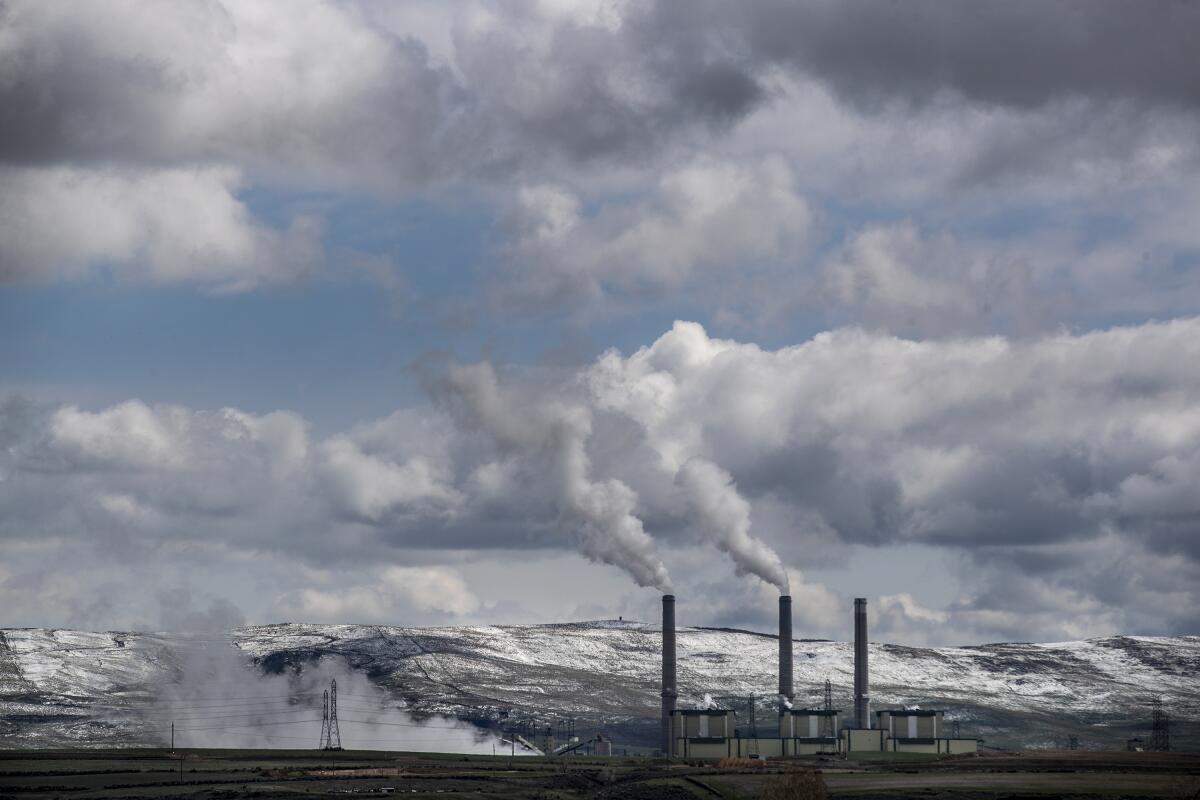
As Colorado’s politics have shifted from red to blue, Gov. Jared Polis has helped spur a rapid shift away from coal.
Six coal plants remain, and all should be gone by 2031. Xcel Energy, the state’s largest electric company, is preparing to retire its remaining coal units at the Comanche, Pawnee and Hayden facilities. Arizona’s Salt River Project will power down its Hayden unit in 2027. Publicly owned Colorado Springs Utilities and Platte River Power Authority plan to close their Ray D. Nixon and Rawhide plants. The owners of Craig Station, including Tri-State Generation and Transmission, recently moved up the closure date.
The state’s shift to renewable energy kicked into high gear in late 2018, when Xcel welcomed Polis to office by becoming the first major U.S. utility to voluntarily commit to 100% carbon-free energy. Also helpful: Some Tri-State member co-ops pushed to defect from Tri-State out of frustration with what they saw as the organization’s insufficient commitment to climate action.
Federal money from Biden’s climate law doesn’t hurt either.
In a written statement last year, Tri-State Chief Executive Duane Highley said Inflation Reduction Act dollars “can accelerate clean energy investment and significant greenhouse gas emissions reductions at a lower cost than alternative scenarios.”
Montana: Return to Colstrip
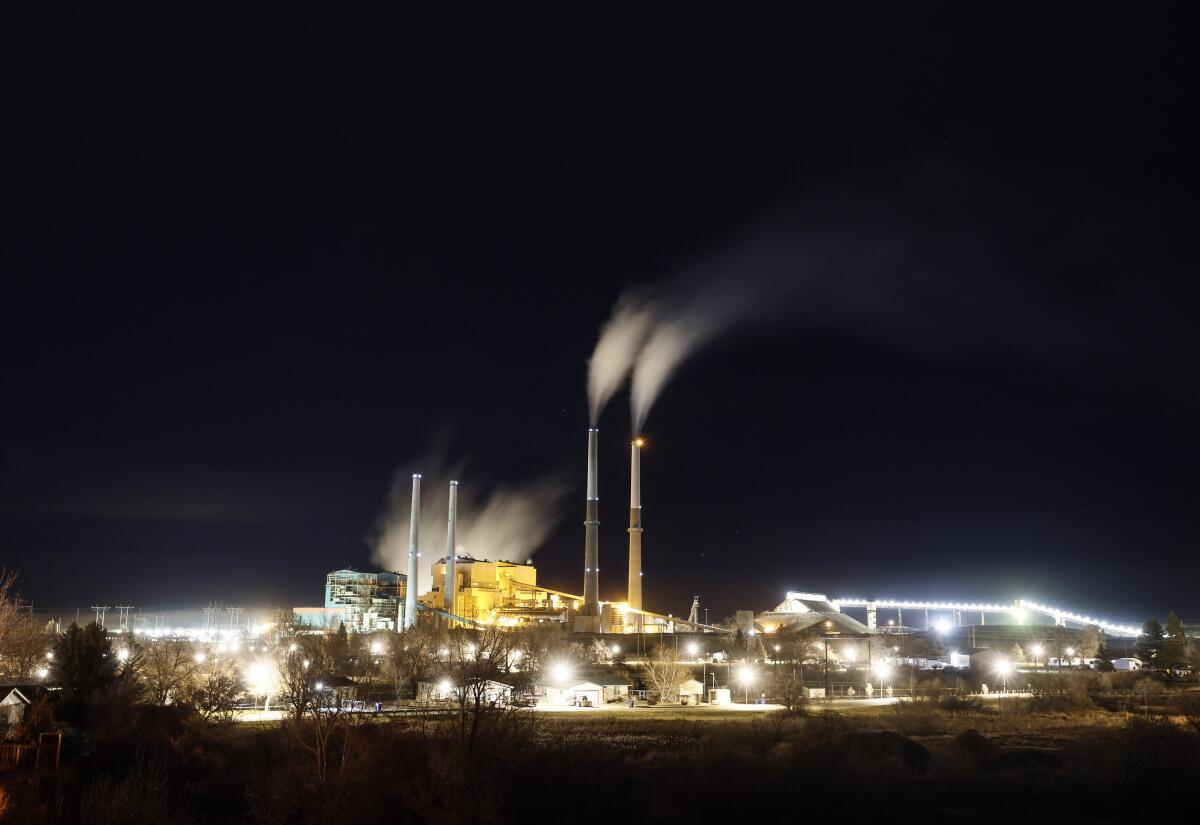
I won’t spend too much time on Big Sky Country, since I wrote thousands of words about the Colstrip plant a few weeks ago.
But I will share what NorthWestern Energy executive John Hines told me when I asked him why Montana’s largest utility company — which owns a share of the coal plant and which has a deal in place to acquire even more — keeps investing in coal.
“Absent Colstrip right now, we would not be able to keep the lights on,” he said.
Hines insisted that additional coal can help balance out growing amounts of solar and wind on the grid, keeping blackouts at bay during stretches of cloudy, low-wind days without forcing NorthWestern to buy expensive electricity on the open market.
For Hines, California is Exhibit A for the dangers of moving too quickly toward renewable energy. Parts of the state experienced brief rolling blackouts during a severe heat storm in August 2020, followed by a series of near-misses two years later.
All of that said: NorthWestern has to be the only electric utility in the country adding coal to its portfolio. Right?
“I don’t know of any others,” Hines responded.
Suffice to say, I’m skeptical.
California hasn’t solved all of its supply-demand challenges as solar and wind displace coal and gas. But with lithium-ion batteries being added to the grid at a rapid clip, keeping the lights on after dark isn’t nearly as hard now as it was a few summers ago.
Add some other innovative clean energy technologies to the mix — green hydrogen projects like the one L.A. is pursuing in Utah, for instance — and it shouldn’t be hard to keep the lights on without coal. It’s no wonder NorthWestern Energy is an island.
If you haven’t already, I hope you’ll read my story on Colstrip. It’s part of The Times’ Repowering the West series.
There’s also a smaller coal plant near Colstrip known as CELP, which sells power to NorthWestern. Another Montana plant called Hardin found new life a few years ago powering cryptocurrency mining, although that venture reportedly didn’t go too well.
“Hardin is still periodically operating. We have no way of knowing if crypto is involved,” said Anne Hedges, policy and legislative director at the Montana Environmental Information Center, an advocacy group.
Everyone else: Nevada, New Mexico, Washington
Twenty-eight down, four to go. Homestretch.
In northern Nevada, another Buffett-controlled utility company, NV Energy, just got approval to stop burning coal at North Valmy Generating Station by 2025. Not far away, Barrick Gold Corp. said last year it had started the process of upgrading its coal-fired TS Power Plant to burn gas in additional to coal, although it’s unclear whether that process has been completed.
In New Mexico, meanwhile, Arizona Public Service Co. is preparing to close Four Corners Power Plant by 2031, bringing to an end a long history of air and water pollution on the Navajo Nation. In Washington, the Centralia coal plant will close next year.
Plenty of progress. Plenty of pain. Lots to celebrate, and a long way to go.
This column is the latest edition of Boiling Point, an email newsletter about climate change and the environment in California and the American West. You can sign up for Boiling Point here. And for more climate and environment news, follow @Sammy_Roth on X.
Toward a more sustainable California
Get Boiling Point, our newsletter exploring climate change, energy and the environment, and become part of the conversation — and the solution.
You may occasionally receive promotional content from the Los Angeles Times.




